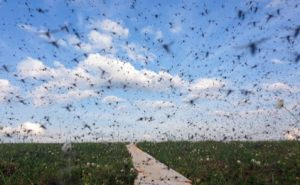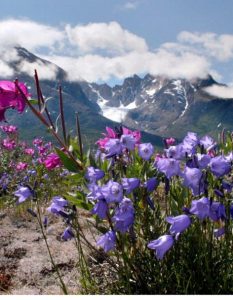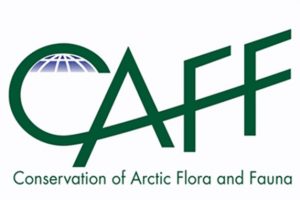“Caribou meat is our meat since I was born. I was raised with it. The skin was my clothes. The meat was my diet and the broth was my drink… Without caribou meat, what would I eat…?”
Rachel Riley, Nunamiut Elder
In the 21st century, it is impossible to discuss Arctic wildlife without mentioning the rapid, life-changing climate warming occuring across the globe. 2020 was the Arctic’s second warmest year on record, and more broadly, Arctic warming is more than double the global warming average since 2000. For species such as the caribou, the rise in temperatures is beginning to have significant impacts on food sources, predators, habitats, and population sizes. Two issues in particular — the increase in Arctic mosquitos and the emerging phenomena of trophic mismatch — are leading to a decline in the caribou population which has many negative impacts on indigenous groups who have relied on the caribou for centuries. Policy makers must come together and think wholistically about how to address the biodiversity loss and consequences associated with losing such an important species.
Climate Driven Challenges:

Swarms of mosquitos are being more plentiful in the Arctic as temperatures warms, notes researcher Lauren Culler for Darmouth University.
The first challenge facing Arctic caribou is the rise of mosquitos and a subsequent increase in mosquito harassment. With temperatures warming earlier in the season, mosquitos appear earlier and are maturing faster, which allows them to avoid predators. Due to the lack of large mammals in the Arctic, when mosquitos find a caribou, they harrass them and prevent the caribou from functioning normally. This increase in energy expenditure and decrease of food intake is especially problematic for calves, who can even die from a mosquito attack.

Vegetation in the Arctic is shifting locations and emerging earlier in the season due to climate warming.
A second challenge facing caribou is the emerging phenonema of trophic mismatch. Trophic mismatch occurs when consumers and their food source are out of sync due to changes in temperature and climate change at large. For caribou, the vegetation they eat is emerging earlier in the season and is past peak nutrient value when the caribou and their calves need the most nutrition. In some places, due to the lack of nutrition, offspring production has dropped up to fourfold, a significant decrease.
These two environmental challenges are causing a decrease in caribou populations across the Arctic, drawing the attention of conservationalists and researchers but also the indigenous communities that rely on these animals or have significant cultural ties to them. Caribou were used for almost every part of daily life, and today are still used in many cultures. They are the foundation of the Nunamiut culture and history, and a symbolic creature for the Inuit in Greenland.

A flowchart demonstrating the centrality and importance of caribou in the Inuit culture
Policy Efforts:
Addressing the declining caribou populations and new ch allenges they are facing is quite difficult due to the root of the issue: climate change. Any solutions directly focusing on the caribou are only bandaids addressing a symptom of the problem. Additionally, research in this area is limited and efforts to understand trophic mismatch and increasing mosquito populations are still small scale. Current research is happening through universities such as Dartmouth College, as well as organizations through the Arctic Council and smaller NGO or science-based organizations. Because these phenomena are newly emerging, research is limited. However, there are many ways bodies such as the Arctic Council can work to further research and find ways to slow the decline in caribou populations or aid indigenous groups affected by the changes. The Conservation of Arctic Flora and Fauna (CAFF) working group spearheads research efforts, report writing, and policy change related to plants and animals in the region, and is a group well-equipped to invest in this research and work with indigenous groups to encorporate traditional knowledge into the best solutions moving forward. There are many areas of improvement with the work the CAFF is doing, including increasing the amount of indigenous representation. Within the group, indigenous voices are underrepresented and due to the nature of the issue, they must be included to share their traditional knowledge and relationship with other scientists, as well as have a voice in an issue that so directly impacts them.
allenges they are facing is quite difficult due to the root of the issue: climate change. Any solutions directly focusing on the caribou are only bandaids addressing a symptom of the problem. Additionally, research in this area is limited and efforts to understand trophic mismatch and increasing mosquito populations are still small scale. Current research is happening through universities such as Dartmouth College, as well as organizations through the Arctic Council and smaller NGO or science-based organizations. Because these phenomena are newly emerging, research is limited. However, there are many ways bodies such as the Arctic Council can work to further research and find ways to slow the decline in caribou populations or aid indigenous groups affected by the changes. The Conservation of Arctic Flora and Fauna (CAFF) working group spearheads research efforts, report writing, and policy change related to plants and animals in the region, and is a group well-equipped to invest in this research and work with indigenous groups to encorporate traditional knowledge into the best solutions moving forward. There are many areas of improvement with the work the CAFF is doing, including increasing the amount of indigenous representation. Within the group, indigenous voices are underrepresented and due to the nature of the issue, they must be included to share their traditional knowledge and relationship with other scientists, as well as have a voice in an issue that so directly impacts them.
Policy Recommendations:
Considering the complexity of the challenge, I have two policy recommendations to improve the research happening in regards to the caribou population, as well as to improve indigenous representation.
- Increase engagement with on-the-ground organizations like the National Park Service
 (In Alaska and the USA, for example) to improve research efforts and get direct partnerships in motion between the Council for Arctic Flora and Fauna. Increasing on-the-ground partnerships will improve knowledge acquisition and help research efforts expand.
(In Alaska and the USA, for example) to improve research efforts and get direct partnerships in motion between the Council for Arctic Flora and Fauna. Increasing on-the-ground partnerships will improve knowledge acquisition and help research efforts expand. - Increase indigenous involvement in conversation efforts to improve knowledge co-production. Specifically, increasing indigenous representation in the Council for Arctic Flora and Fauna and the Biodiversity Congress held must happen in order to expand the knowledge factored into decision making and to increase equity in the process.
To learn more about the issues facing caribou in the Arctic and a current effort to address the issue, see the presentation below for an in-depth analysis and explanation of the policy recommendations.
[ensemblevideo version=”5.6.0″ content_type=”video” id=”a4cfdf83-5347-4846-b5db-e1ba7cfddb99″ width=”848″ height=”480″ displaytitle=”true” autoplay=”false” showcaptions=”false” hidecontrols=”true” displaysharing=”false” displaycaptionsearch=”true” displayattachments=”true” audiopreviewimage=”true” isaudio=”false” displaylinks=”true” displaymetadata=”false” displaydateproduced=”true” displayembedcode=”false” displaydownloadicon=”false” displayviewersreport=”false” embedasthumbnail=”false” displayaxdxs=”false” embedtype=”responsive” forceembedtype=”false” name=”Katie.Kurtz.CaribouPresentation”]
